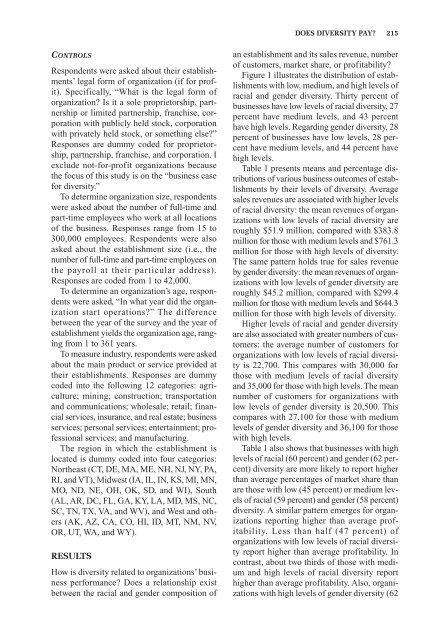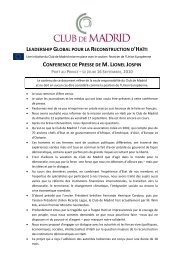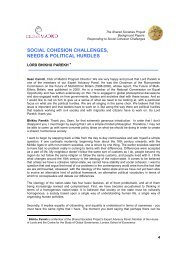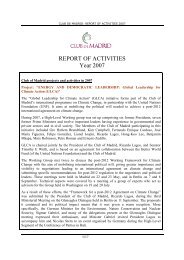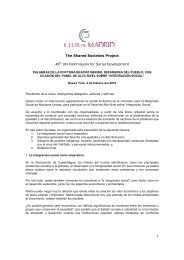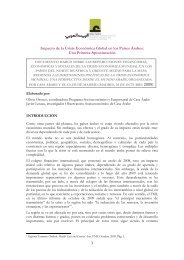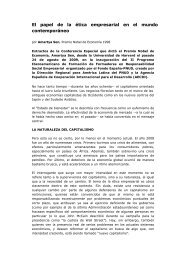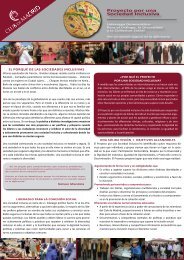Does Diversity Pay? - American Sociological Association
Does Diversity Pay? - American Sociological Association
Does Diversity Pay? - American Sociological Association
Create successful ePaper yourself
Turn your PDF publications into a flip-book with our unique Google optimized e-Paper software.
DOES DIVERSITY PAY?—–215<br />
CONTROLS<br />
Respondents were asked about their establishments’<br />
legal form of organization (if for profit).<br />
Specifically, “What is the legal form of<br />
organization? Is it a sole proprietorship, partnership<br />
or limited partnership, franchise, corporation<br />
with publicly held stock, corporation<br />
with privately held stock, or something else?”<br />
Responses are dummy coded for proprietorship,<br />
partnership, franchise, and corporation. I<br />
exclude not-for-profit organizations because<br />
the focus of this study is on the “business case<br />
for diversity.”<br />
To determine organization size, respondents<br />
were asked about the number of full-time and<br />
part-time employees who work at all locations<br />
of the business. Responses range from 15 to<br />
300,000 employees. Respondents were also<br />
asked about the establishment size (i.e., the<br />
number of full-time and part-time employees on<br />
the payroll at their particular address).<br />
Responses are coded from 1 to 42,000.<br />
To determine an organization’s age, respondents<br />
were asked, “In what year did the organization<br />
start operations?” The difference<br />
between the year of the survey and the year of<br />
establishment yields the organization age, ranging<br />
from 1 to 361 years.<br />
To measure industry, respondents were asked<br />
about the main product or service provided at<br />
their establishments. Responses are dummy<br />
coded into the following 12 categories: agriculture;<br />
mining; construction; transportation<br />
and communications; wholesale; retail; financial<br />
services, insurance, and real estate; business<br />
services; personal services; entertainment; professional<br />
services; and manufacturing.<br />
The region in which the establishment is<br />
located is dummy coded into four categories:<br />
Northeast (CT, DE, MA, ME, NH, NJ, NY, PA,<br />
RI, and VT), Midwest (IA, IL, IN, KS, MI, MN,<br />
MO, ND, NE, OH, OK, SD, and WI), South<br />
(AL, AR, DC, FL, GA, KY, LA, MD, MS, NC,<br />
SC, TN, TX, VA, and WV), and West and others<br />
(AK, AZ, CA, CO, HI, ID, MT, NM, NV,<br />
OR, UT, WA, and WY).<br />
RESULTS<br />
How is diversity related to organizations’ business<br />
performance? <strong>Does</strong> a relationship exist<br />
between the racial and gender composition of<br />
an establishment and its sales revenue, number<br />
of customers, market share, or profitability?<br />
Figure 1 illustrates the distribution of establishments<br />
with low, medium, and high levels of<br />
racial and gender diversity. Thirty percent of<br />
businesses have low levels of racial diversity, 27<br />
percent have medium levels, and 43 percent<br />
have high levels. Regarding gender diversity, 28<br />
percent of businesses have low levels, 28 percent<br />
have medium levels, and 44 percent have<br />
high levels.<br />
Table 1 presents means and percentage distributions<br />
of various business outcomes of establishments<br />
by their levels of diversity. Average<br />
sales revenues are associated with higher levels<br />
of racial diversity: the mean revenues of organizations<br />
with low levels of racial diversity are<br />
roughly $51.9 million, compared with $383.8<br />
million for those with medium levels and $761.3<br />
million for those with high levels of diversity.<br />
The same pattern holds true for sales revenue<br />
by gender diversity: the mean revenues of organizations<br />
with low levels of gender diversity are<br />
roughly $45.2 million, compared with $299.4<br />
million for those with medium levels and $644.3<br />
million for those with high levels of diversity.<br />
Higher levels of racial and gender diversity<br />
are also associated with greater numbers of customers:<br />
the average number of customers for<br />
organizations with low levels of racial diversity<br />
is 22,700. This compares with 30,000 for<br />
those with medium levels of racial diversity<br />
and 35,000 for those with high levels. The mean<br />
number of customers for organizations with<br />
low levels of gender diversity is 20,500. This<br />
compares with 27,100 for those with medium<br />
levels of gender diversity and 36,100 for those<br />
with high levels.<br />
Table 1 also shows that businesses with high<br />
levels of racial (60 percent) and gender (62 percent)<br />
diversity are more likely to report higher<br />
than average percentages of market share than<br />
are those with low (45 percent) or medium levels<br />
of racial (59 percent) and gender (58 percent)<br />
diversity. A similar pattern emerges for organizations<br />
reporting higher than average profitability.<br />
Less than half (47 percent) of<br />
organizations with low levels of racial diversity<br />
report higher than average profitability. In<br />
contrast, about two thirds of those with medium<br />
and high levels of racial diversity report<br />
higher than average profitability. Also, organizations<br />
with high levels of gender diversity (62


